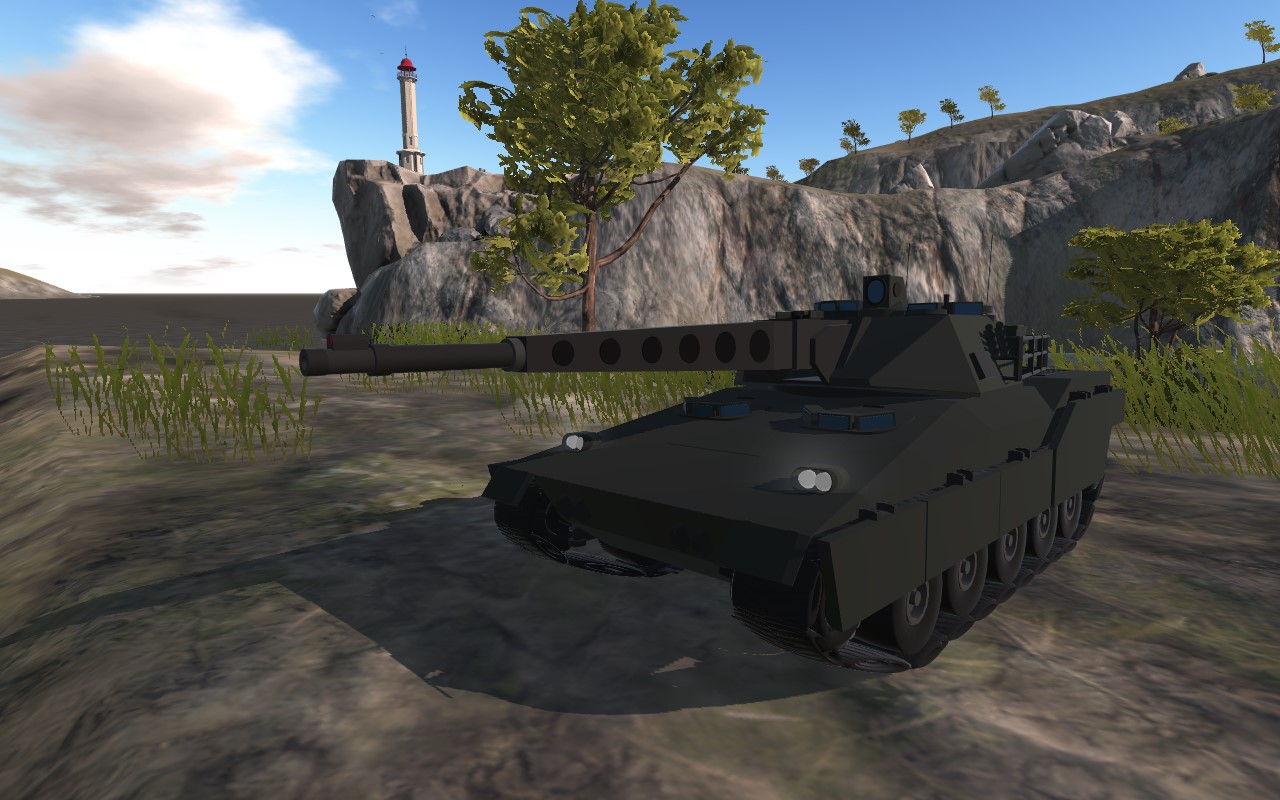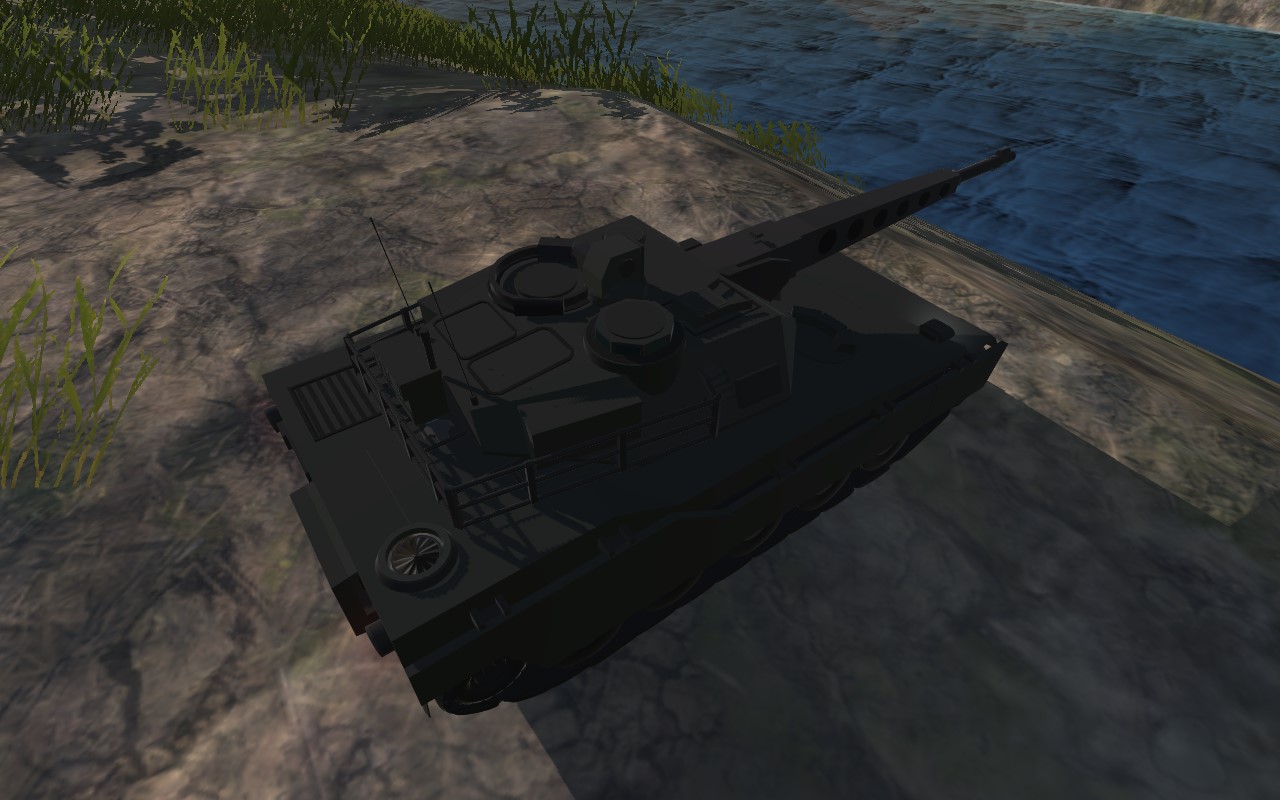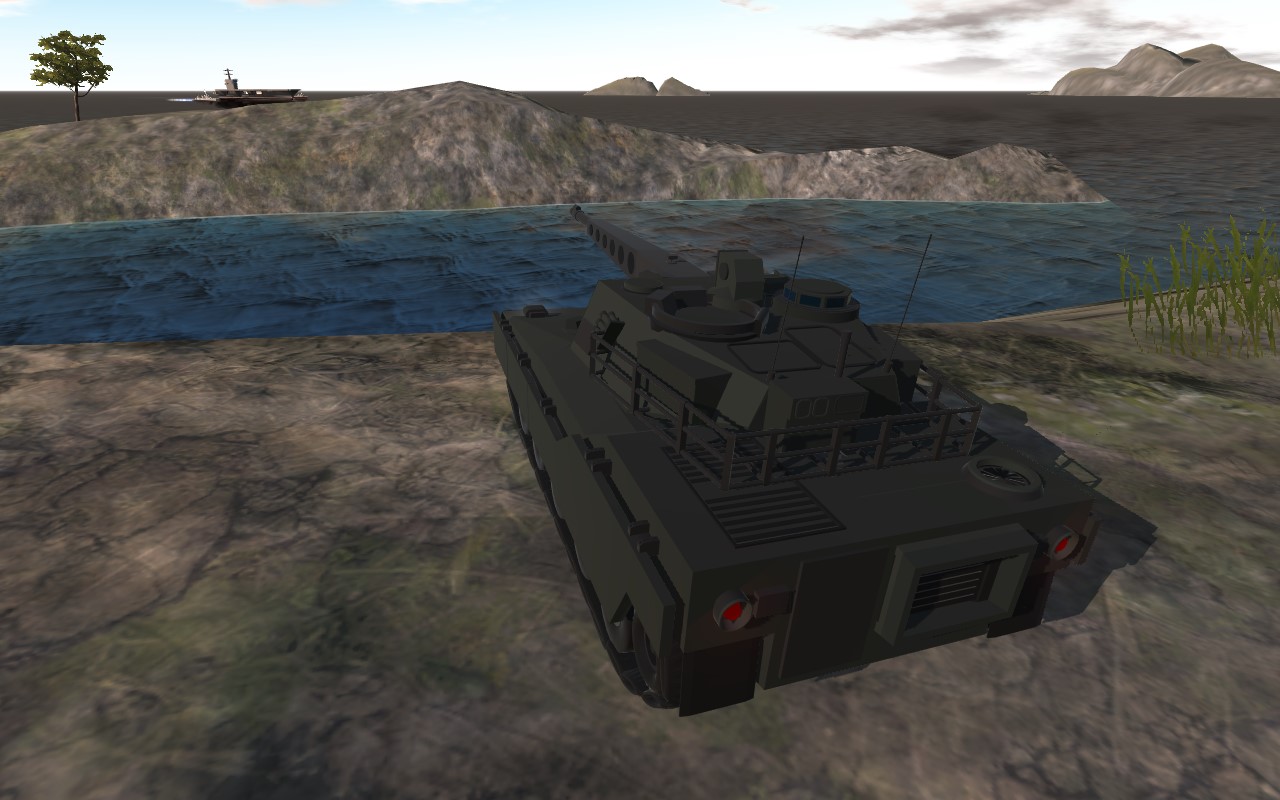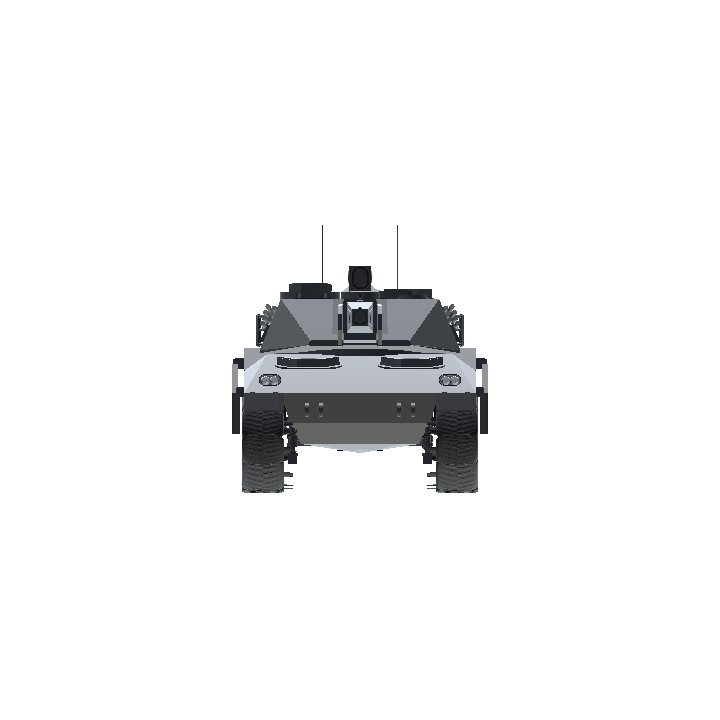Background
The M28 Rottweiler Rapid Deployment Force Light Tank was built from lessons learned during the development of the M8 Mastiff. Resulting in a light airdrop-able platform capable of performing a multitude of roles such as armoured recon, cavalry scouting, area/airspace denial and tank-tank engagement.
The idea of having mobile protective firepower that can be delivered by air – whether air drop or air land – and get into the fight immediately enables the Federation to retain the initiative we gain by jumping in. But if all the Army was doing was jumping in and then moving at the speed of a World War II paratrooper, they would rapidly lose the initiative gained by conducting a strategic or operational joint forcible entry. A force on the ground that’s mobile and has firepower can retain that initiative and achieve decisive results against the enemy. This type of mobile and lethal force with multiple methods of infiltration behind enemy lines is the true essence of the cavalry concept. The role of the tank in cavalry operations is to protect the reconnaissance elements.
Units that are small, flexible, and versatile fighting forces maximize the inherent characteristics of mobile firepower and reconnaissance. These units would be organized, equipped and trained with light vehicles, and prepared for rapid strategic deployment to arrive in a contingency area in a ready-to-fight configuration. In keeping with the strategic and tactical imperatives of our new light forces, these light vehicles would not have the levels of armor protection found in heavier armor or cavalry units but could receive armour packages to give the vehicle protection against 30mm rounds from the front at the cost of 1-2 tons extra weight. This much lower level and, in some cases, absence of armor protection is a necessary tradeoff to provide the firepower and mobility required.
The RDF/LT armed with the 76mm gun, was a 13.4t vehicle. The prototype originated in 1978 and was gradually rebuilt to carry three types of turrets. The light tank for rapid deployment forces was a new concept in the development of a light tank. Inclined frontal armor provides sufficient protection with low weight. The main armament is a fully automatic 76mm cannon, which allows firing armor-piercing fin stabilized projectiles with separating leading parts with ultra-high initial speed or high-explosive fragmentation ammunition at a rate of 70 rounds per minute.
The original RDF/LT had a two-man crew positioned in the hull with dual controls so either capable of driving or operating the weapon systems. The vehicle used a "Hunter/Killer" targeting system. The primary sight was on an independently rotating head. When the commander founds a target it was acquired by the gun sight and the primary sight freed to look for other targets or threats.
The high tracking speeds of the fully stabilized gun guidance system provide effective anti-aircraft protection at elevation angles up to 45°. A light tank of rapid deployment forces actually combines the capabilities of two vehicles in one: it provides combat against tanks and aerial targets. With a mass of 14.8 tons, the light tank is easily transported in air and sea in large quantities and can easily overcome light bridges, narrow tunnels and city streets.
The RDF/LT tank was armed with a 76mm automatic cannon capable of hitting any tank or vehicle in the world and an auxiliary 7.62mm machine gun. The low weight and low recoil forces made the 76mm cannon ideal for installation on a light machine. Automatic loading provided selective delivery of kinetic shots (BPS) and multipurpose high-explosive fragmentation shots.
The gun has an elevation angle of up to 45°, which allows effectively fights with enemy aircraft and helicopters, using ammunition with a proximity fuze. The gun fires either in single shots or bursts at a rate of fire of 70 rounds per minute. The length of the gun was 5,661m, weight 1144kg, and resistance to pullback 145kN.
Telescopic shots for the RDF/LT were developed later on. The shells are contained in the shell of the warhead of the liner. The tank can carry 60 shots of the caliber of 76mm, 2600 rounds of 7.62-mm ammunition and 16 smoke grenades for setting a local smoke screen or protection from surveillance in the infrared range. The maximum range of the main 76mm armament is more than 9000m.
The vehicle could be transported helicopters. Strategic and tactical advantages can be achieved by moving quickly to deploy tanks with the crew, fuel and ammunition. A C-5A can carry eight RDF/LT tanks per flight, a C-44 can carry three vehicles, and a two in a C-150. Small volume and low weight make the Rottweiler ideal for transportation by sea vehicles.
The RDF / LT tank is based on the components of and from a number of combat tested systems: the Terrier, the Mastiff and the modern Mammoth IIA7 main battle tank of the Federation. The 76mm cannon of this light tank is capable of destroying most tanks at a combat range. And in a duel battle with a larger, heavier tank, the smaller machine has a twice higher probability of survival, since in a real battle a tank that hits first will destroy another tank.
The armor of the 14.8-ton Rottweiler provides protection against most of the attack assets of foreign divisions. Protection is provided by inclined aluminum armor with special steel extra armor plates. The vehicle is provided with armor protection equivalent to the BMP M-2.
The RDF / LT tank has advantages in terms of speed and mass of wheeled vehicles plus the ability to move where the wheels cannot pass. It has maneuverability in arctic snow, on muddy shores and in sandy desert, as well as in severe hilly terrain. Power density 24 hp / t allows the light tank to quickly move to a variety of unprepared firing positions, in which the low profile of the RDF / LT tank makes it the most difficult target.
Description modified from https://www.globalsecurity.org/military/systems/ground/rdf-lt.htm
Controls
Movement
-Pitch moves forward and reverse
-Yaw turns
Weapons
-VTOL Rotates turret
-Trim Elevates
-FireWeapons fires proximity fused (Air To Air)
-FireGuns fires 7.62mm and 76mm gun
Specifications
General Characteristics
- Predecessor M7A2 Mammoth
- Created On Mac
- Wingspan 9.0ft (2.7m)
- Length 25.4ft (7.7m)
- Height 9.5ft (2.9m)
- Empty Weight 56,389lbs (25,577kg)
- Loaded Weight 57,732lbs (26,186kg)
Performance
- Power/Weight Ratio 0.233
- Wing Loading 21,454.0lbs/ft2 (104,747.4kg/m2)
- Wing Area 2.7ft2 (0.3m2)
- Drag Points 4848
Parts
- Number of Parts 458
- Control Surfaces 0
- Performance Cost 2,773







Beautiful design!
@RocCrafter101 Finally,A Worthy Opponent !